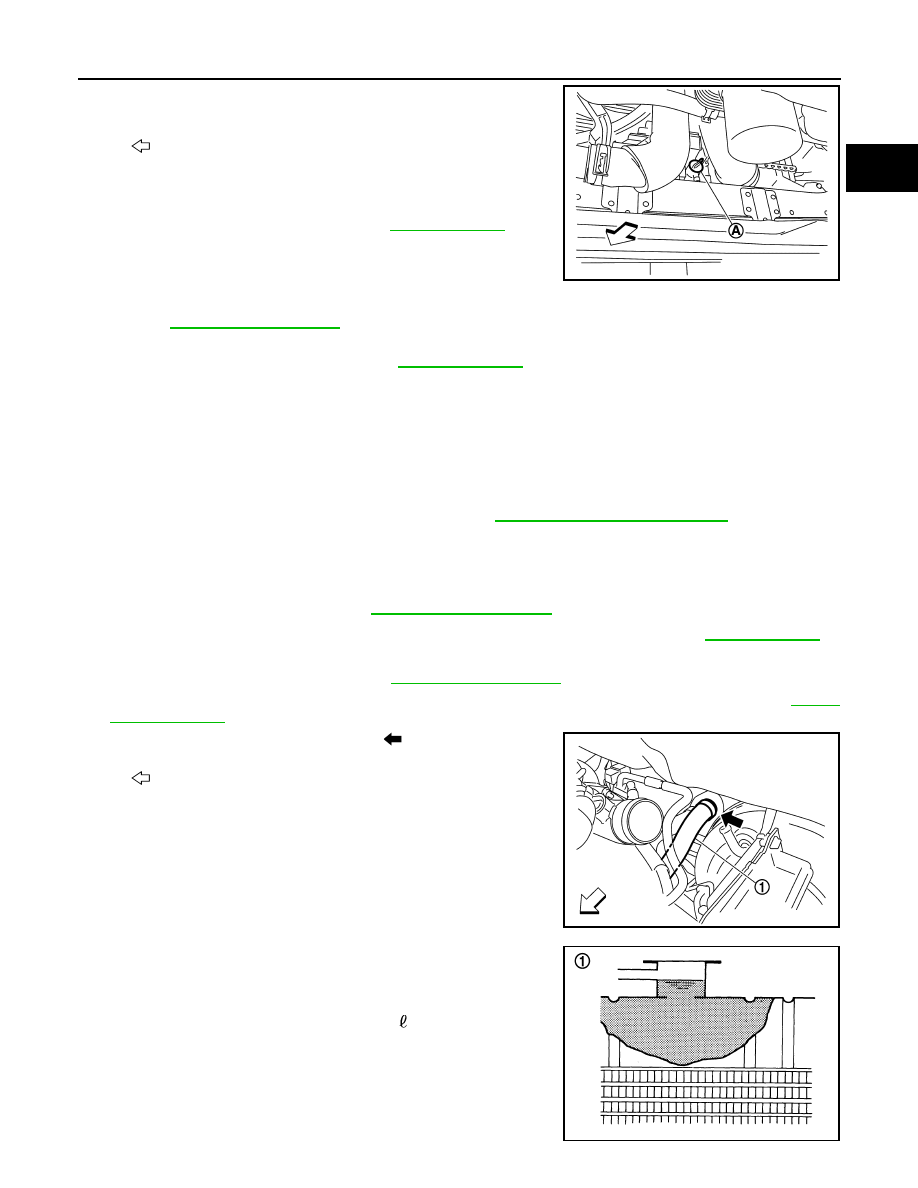Nissan Juke F15. Manual - part 182

ENGINE COOLANT
CO-11
< PERIODIC MAINTENANCE >
[MR FOR NISMO RS MODELS]
C
D
E
F
G
H
I
J
K
L
M
A
CO
N
P
O
2. Open radiator drain plug (A) at the bottom of radiator, and then
remove radiator cap.
CAUTION:
Perform this step when engine is cold.
• When draining all of engine coolant in the system, open water
drain plugs on cylinder block. Refer to
3. Remove reservoir tank if necessary, and drain engine coolant and clean reservoir tank before installing.
4. Check drained engine coolant for contaminants such as rust, corrosion or discoloration. If contaminated,
flush the engine cooling system. Refer to
.
5. Disconnect drain hose.
Refilling
INFOID:0000000012197518
CAUTION:
• Do not reuse O-rings.
• Do not put additive such as waterleak preventive, since it may cause cooling waterway clogging.
• When refilling use Genuine NISSAN Long Life Antifreeze/Coolant (blue) or equivalent in its quality
mixed with water (distilled or demineralized). Refer to
MA-11, "Fluids and Lubricants"
1. Install reservoir tank if removed, and install radiator drain plug.
CAUTION:
Be sure to clean drain plug and install with new O-ring.
• If water drain plugs on cylinder block are removed, close and tighten them. Refer to
2. Check that each hose clamp has been firmly tightened.
3. Remove air duct (suction side). Refer to
4. Disconnect vacuum hose break booster side, and removal vacuum tube from clamp. Refer to
5. Disconnect heater hose (1) at position (
) in the figure.
• Enhance heater hose as high as possible.
6. Fill radiator (1) to specified level.
CAUTION:
Never adhere the engine coolant to electronic equipments
(alternator etc.).
• Pour coolant slowly of less than 2 (2-1/8 US qt, 1-3/4
Imp qt) a minute to allow air in system to escape.
• When engine coolant overflows disconnected heater
hose, connect heater hose, and continue filling the engine
coolant.
: Vehicle front
JPBIA4452ZZ
Radiator drain plug
: Refer to
: Vehicle front
JPBIA4453ZZ
JPBIA0819ZZ